What is there to say about Eels? For many, they’re the things of nightmares, making their skin crawl. But if you enjoy fishing for them, you know what great sport they are. They’re not the most endearing creature you can reel in, or even the biggest. But anglers wise to the game will tell you that there’s something to be said for Eel fishing.

From freshwater streams to the ocean’s deepest shipwrecks, there’s serious serpent hunting to be done. Hook a trophy, and you’re looking at a true basilisk. But what gives these sea snakes such app-Eel?
How to Identify Eels
There are over 800 Eel species around the world, from monstrous Morays to gossamer Glass Eels. Anglers only target a handful of these for sport, however. Among the most common are Conger Eels, with varieties in Europe, Asia, and North America. But when it comes to hype, American Eels (Anguilla rostrata) are a really big deal.
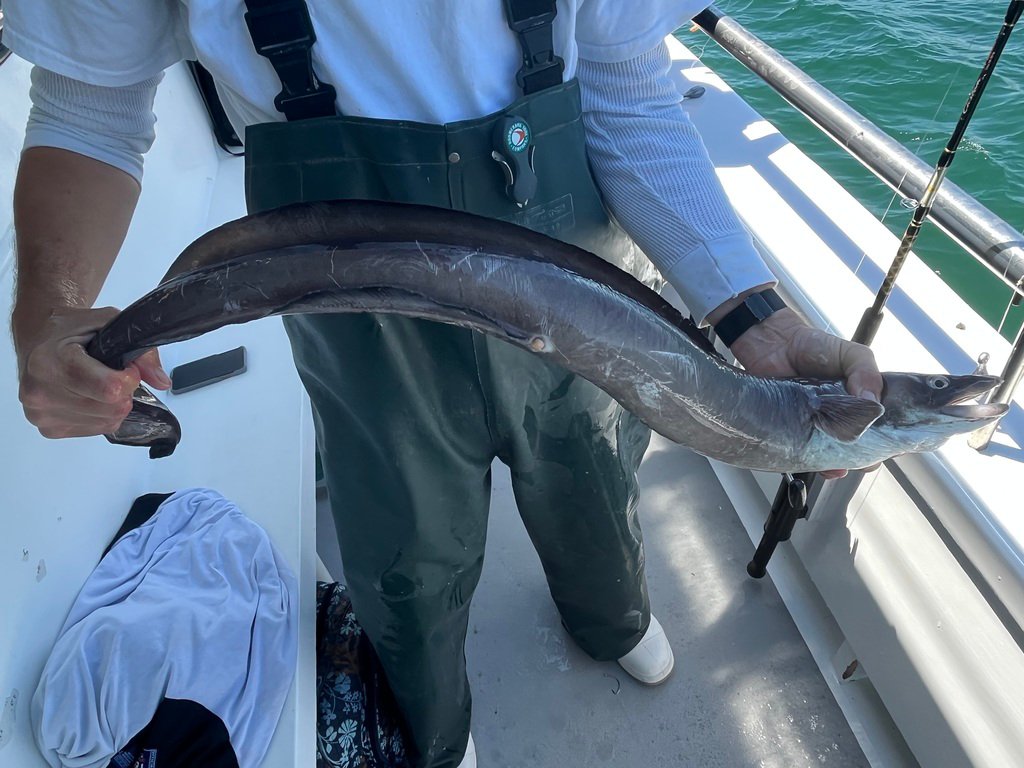
Something unique about American Eels is their catadromous nature. This means they spawn in saltwater only to spend most of their lives in freshwater. Their range stretches from Greenland and Iceland all the way down to the Caribbean. Outside of their breeding grounds in the Sargasso Sea, you’ll also find them in rivers, lakes, estuaries, and coastal bays.
American Eels transform with every stage of their life cycle. So, depending on when you catch them, they look totally different! For every phase, anglers call them different names. Don’t let that confuse you – these are all still American Eels:
- Glass Eel: Transparent juveniles returning from the Sargasso Sea
- Elver: Small, pigmented eels entering rivers
- Yellow Eel: Adult freshwater Eels, most commonly targeted for sport
- Silver Eel: Mature American Eels preparing to migrate back to the sea
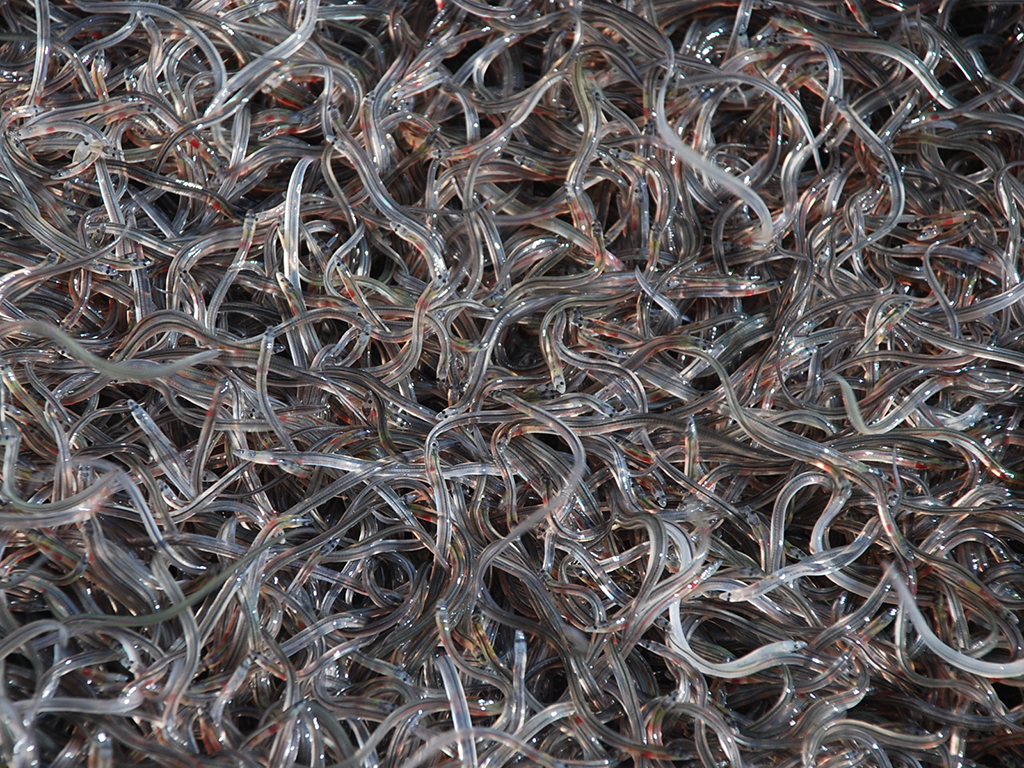
American Eels grow 2–3 feet long. Their size may not impress you, but their grit certainly will. In fact, if you’re in the market for some rod-bending action, these are the fish to hook.
And, for the record, yes – Eels technically are fish! What’s more, they make a delicious meal.
Another popular target is the American Conger Eel (Conger oceanicus). This is a lifelong saltwater species that thrives along the Atlantic coast, from the Gulf of Maine down to the Caribbean. Congers dwell in reefs, wrecks, and jetties anywhere from 30–500 feet down.
Conger Eels grow longer and thicker than their freshwater cousins, usually 3–5 feet long. You’ll also notice they have blunt snouts and robust jaws designed for ambushing prey among the rocks. They’re typically gray or slate-colored, compared to the various hues of American Eels.
As we mentioned, you can catch other kinds of Conger Eels beyond North America. Europe and Asia both have their own varieties. The European Eel (Anguilla anguilla) is also popular, as is the Japanese Eel (Anguilla japonica).
Best Eel Fishing Spots
Itching to get a feel for Eel? Not everyone has a soft spot for them, but the fight alone makes it worth a try. Luckily, you’ll find Eels far and wide. Here’s where you can hook the most popular species.
Chesapeake Bay

The Chesapeake Bay and its tributaries are prime American Eel habitat. The brackish waters are ideal for Elvers growing into their Yellow Eel stage. In late spring and early summer, droves of them move through this water system. And it won’t be hard to find them! Just scour the local tidal creeks, mudflats, and rocky structures, especially at night.
Maryland and Virginia both allow recreational fishing for American Eel, just be mindful of the minimum size and bag limits for each state.
Hudson River

New York’s Hudson River hosts one of the most important American Eel runs on the East Coast. Elvers migrate upriver each spring, while mature Eels inhabit the river for years. Anglers here often land them while targeting Stripers, but those in the know are happy to target them! Dedicated fishers set baited rigs for Eels at night.
The best time to target American Eel here is from April through September. Just be sure to read up on state regulations concerning what gear you can use and the minimum size limit. While Eels are edible, some portions of the Hudson have consumption advisories due to contaminants.
Gulf of Maine

If you’re ready to size up to Conger Eel, there’s no better hunting ground than the Gulf of Maine. These fish thrive offshore and along the rocky coastlines of York, Portland, and Boothbay Harbor, making them accessible to boaters and shore anglers alike. Target them near rocky piers, wrecks, reefs, and holes during the day. Night fishing is productive as well, when these Eels emerge to feed.
Summer and early fall draw Congers close to shore, making this the easiest time to fish for them. Recreational regulations for Conger Eel are fairly lenient, but you should always check size and bag limits for your area.
English Channel, UK
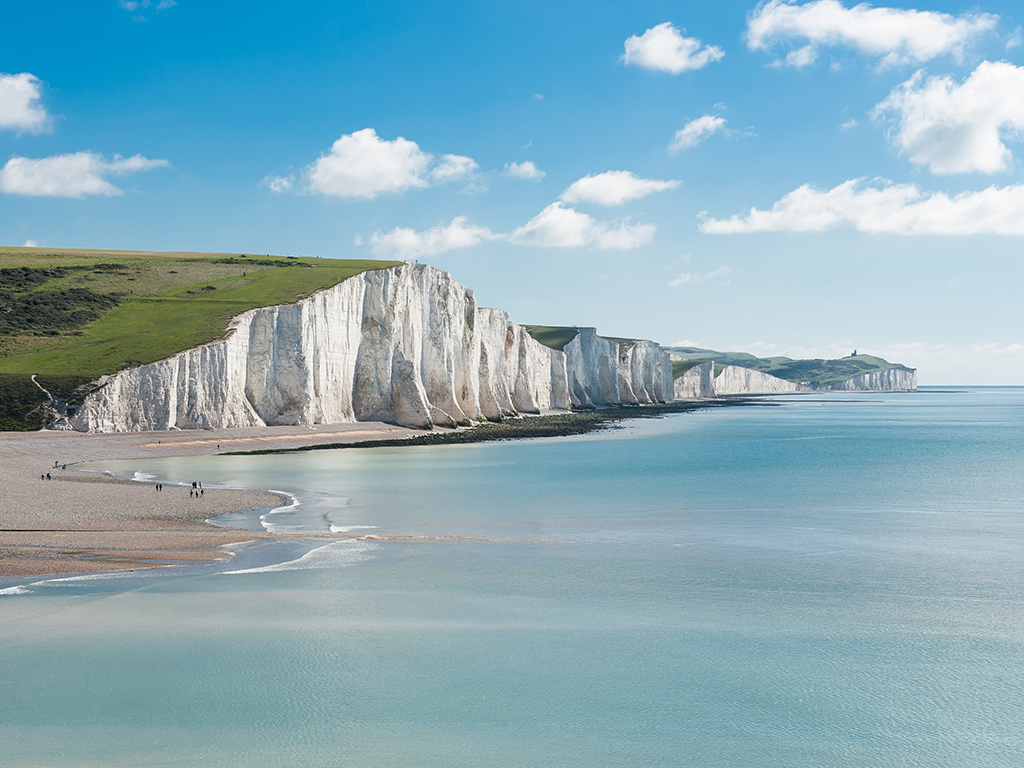
American Eels aren’t the only ones that will test your skill set. The English Channel is famous for some of Europe’s biggest Congers, known to exceed 100 pounds. It’s no wonder that jellied Eels are such a delicacy! And wreck fishing off the south coast of England is simply epic. Just a couple of spots to try your luck are Plymouth and Brighton. Anglers here typically anchor up and lower stout bottom rigs with fish baits, with night fishing producing some of the biggest trophies.
Conger Eel fishing here is most productive from late spring through early autumn. Catch and release is common, but you are technically allowed to keep this species if it meets the UK’s minimum size limit. All other Eel species must be released.
Tokyo Bay, Japan

Japanese Eel are closely related to American Eel. They’re highly valued for their delicate, flavorful meat – often grilled as unagi. So, it’s no surprise that Eel fishing has deep cultural roots in Japan. There’s no place more iconic to fish for them than Tokyo Bay, where anglers use traditional baited rigs in tidal rivers and estuaries during the warm summer months.
Given the popularity of Eels, Japan has strict regulations for them, including seasonal closures and size limits. You can typically keep only a few legal-sized fish. We recommend hiring a local charter boat to help you fish responsibly.
How to Fish for Eel
Eels put up a good fight, but they’re also beginner-friendly. Fishing for them doesn’t require much finesse or fancy retrieves – just a bit of strategy and stealth. And, of course, some strong forearms.
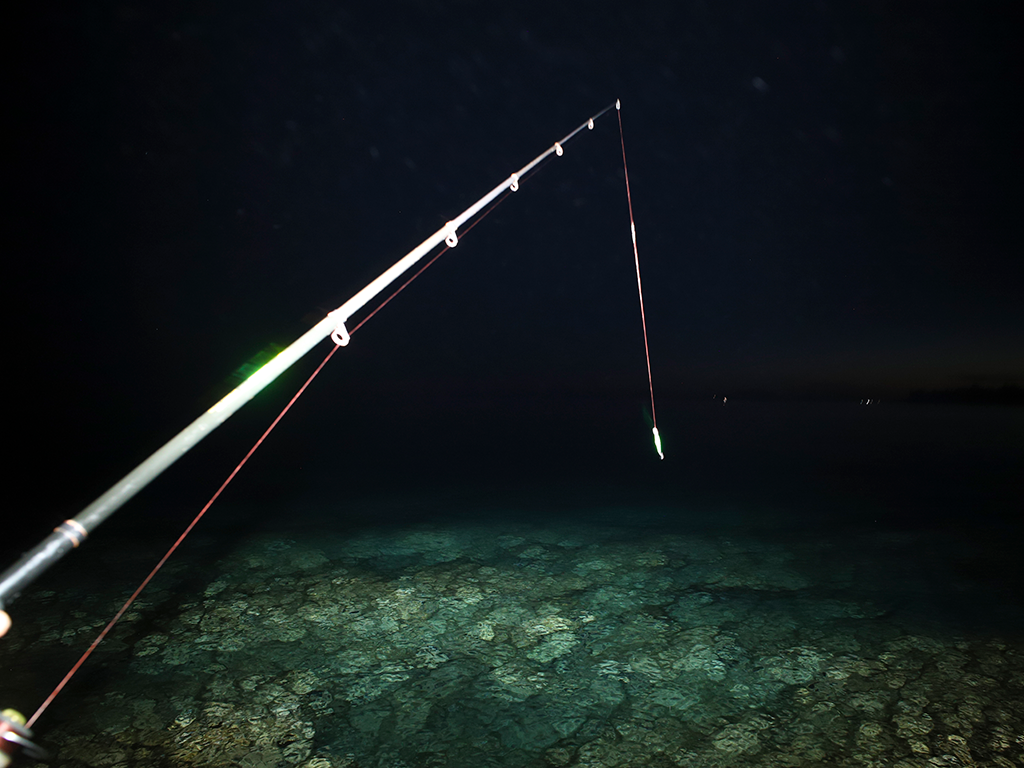
Mainly, it helps to fish for Eels at night, when they slither out of nooks and crannies to feed. American Eels cozy up to muddy or silty bottoms. Look for them under submerged logs and slow-moving tidal channels. They’re especially active on warm, humid nights.
In the ocean, Conger Eels stick to rocky areas, as well as reefs and wrecks. You can target them from shore along especially rocky jetties.
Aside from that, it doesn’t take much to entice a bite. The most common method for catching Eels is bottom fishing. Cast out, let your rig settle, and keep tension on the line so you can feel subtle bites.
Depending on your target species, other techniques may come into play. Drifting and slow-trolling can help you catch Congers. Meanwhile, some anglers set lines or bank sticks overnight to catch American Eel in rivers.
The hardest part will be reeling in your catch. Eels fight with twisting power and often wrap themselves around the line or structure. When you feel a bite, wait before setting the hook – too early, and they’ll drop the bait. A firm and steady retrieve is crucial. Big, muscular Congers can thrash violently when landed, requiring a strong net or gaff.
Eel Fishing Gear
Choosing the right gear will depend on what type of Eel you’re after. Bait and tackle vary from country to country, but anglers in the US can usually count on the following:
For American Eel:
- A 6–8′ medium to medium-heavy spinning or baitcasting rod
- A reel that can handle 10–20 lb line
- Braided mainline that’s 10–20 lb test
- Size 2–1/0 circle hooks to reduce deep hooking
- Simple running ledger rigs or sliding sinker rigs
For Conger Eel:
- A heavy boat rod or surf rod
- A sturdy conventional or spinning reel that can handle large fish and rocky structure
- 20–50 lb braided mainline
- A 2–3′ fluorocarbon or mono leader in 20–60 lb test – in addition to the rocks, Congers have abrasive teeth
- 3/0–6/0 circle or J hooks
- Paternoster or heavy-duty running rigs with a clip-down sinker to keep bait pinned to the bottom.
Best Eel Baits

To seal the Eel deal, use natural baits with a strong scent trail. Top choices include:
- Nightcrawlers and worms (classic for American Eel)
- Cut bait like mackerel, herring, or squid strips (especially for Conger)
- Small live fish like those mentioned above also work well at night.
Lures are rarely effective for Eels, though some anglers experiment with scented soft plastics near structure for Congers.
When to Fish for Eel
American Eels are most active from late spring through early fall, especially on warm, humid nights. Fishing for them in their Silver Eel stage is especially good in tidal rivers during late summer and fall when they migrate downstream.
Conger Eel fishing is decent year-round. They become especially accessible during summer and early autumn when they move closer to shore. The sea is often calmest at this time of year, which makes it a great time to target them offshore as well.
Eel Fishing FAQs
Eel Fishing: The Reel Deal
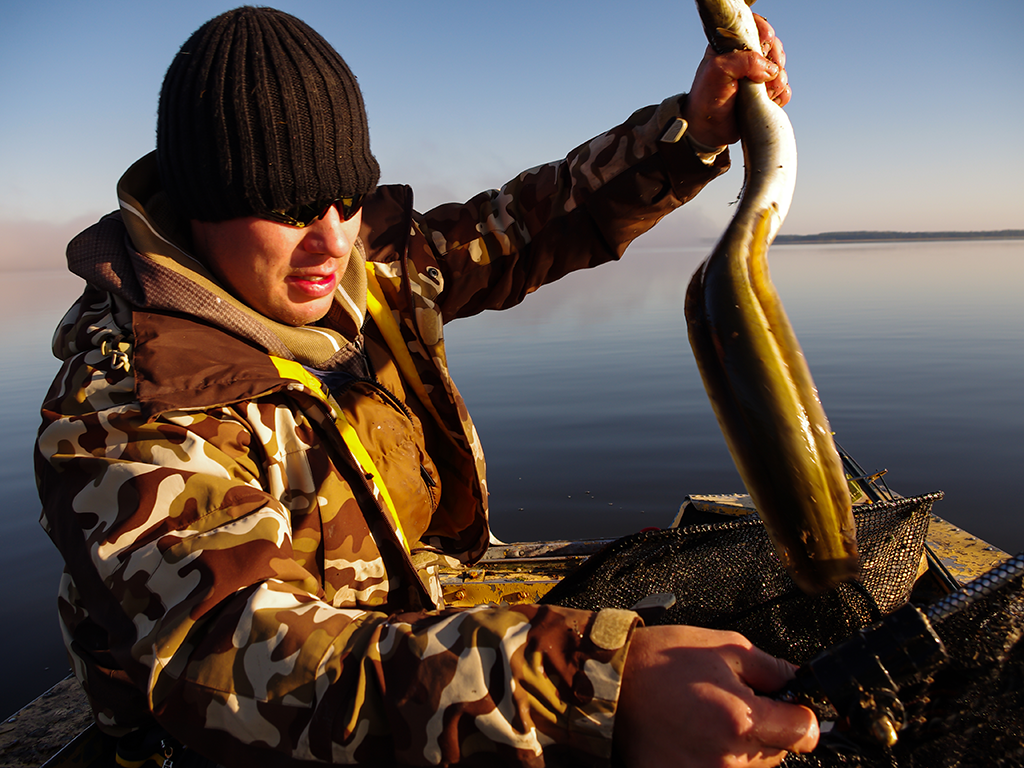
Whether you’re soaking worms in a quiet river or plumbing shipwrecks in the deep, Eel fishing is always an adventure. These fish are wily, powerful, and surprisingly delicious. Really, it’s no wonder they’ve won anglers over for centuries – from the Hudson River and the English Channel to Tokyo Bay. Pound for pound, they’re among the hardest fighting fish on rod and reel. And that makes them the real deal!
Have we convinced you that Eels are worth fishing for? Maybe you already love targeting these slimy creatures? Either way, we’d love to hear from you in the comments below!
